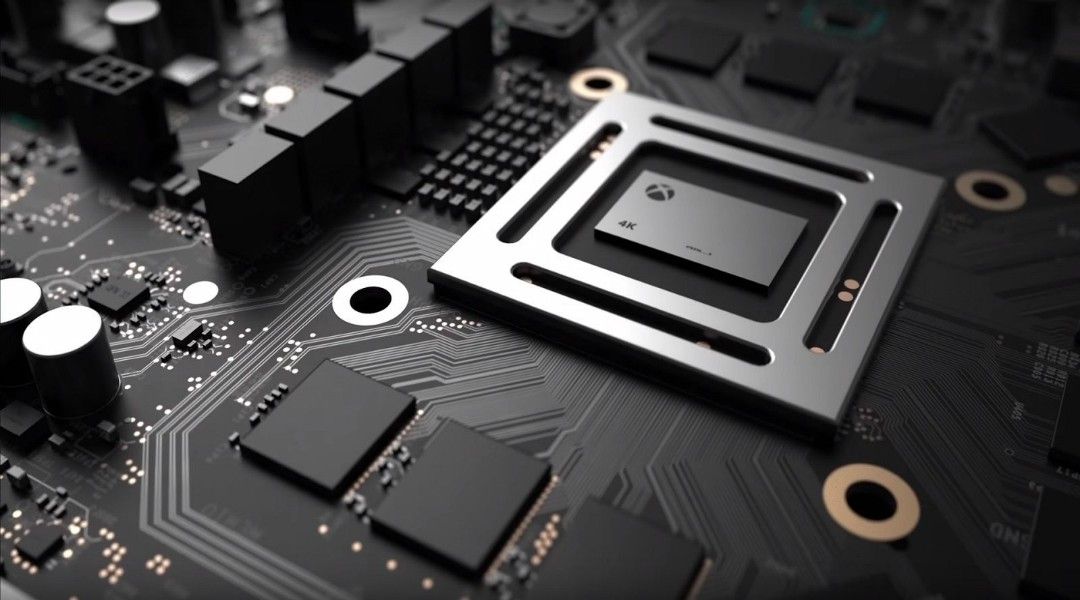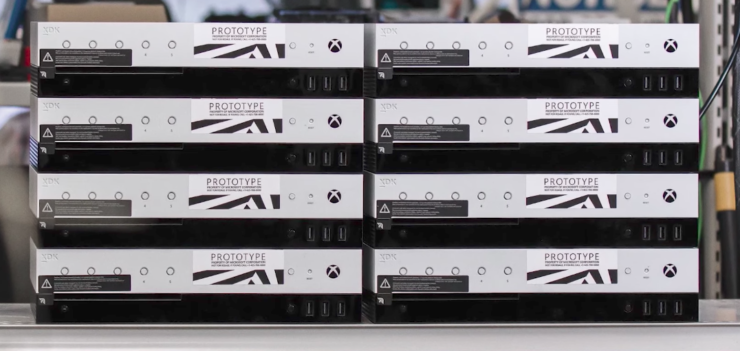Microsoft and Team Xbox are toiling away at the upcoming Project Scorpio Xbox console, set to make a full debut at this year's E3. And though the conference doesn't kick off for a few more days, Microsoft is getting a leg-up, teasing the Project Scorpio development kit ahead of the E3 press conference on Sunday. Microsoft released a new video all about the upcoming dev kit, and while it doesn't reveal a ton of information or details players haven't yet heard, the clip zooms in on the console's hardware and overall appearance.
The video features Larry Hryb, Xbox Live's Major Nelson, as he speaks with Xbox engineer Kevin Gammill about the dev kit, its power and functionality, the importance of it for game creators, and how it differs from the final Project Scorpio console. Gammill first explained that the need for this separate piece of hardware comes down to flexibility for the game developers. In his experience, he's found that they like to come in at a "higher spec than what the retail kits would be," so it's important to provide "additional headroom for the developers" to start higher and tune lower as their shipping date approaches.
Gammill then broke down the differences between the Scorpio dev kit and the final console, of which there are a surprising many. Compared to the retail kit, the dev kit has four more CUs, 12 more gigabytes of RAM (totally 24 gigabytes of DDR5 RAM), and an additional 1 terabyte SSD hard disk drive. This extra headroom gives developers leverage to improve iteration times and debug things more quickly. From the exterior, the dev kit looks "completely different" from the Project Scorpio console. It features an alternate front-panel OLED display that can show frame rate, mini versions of an in-development game, or completely new games designed specifically for front-panel display. The dev kit also has five programmable buttons developers can use to change gameplay.
The Scorpio dev kit also touts a handful of new elements near the back, namely an additional network interface controller (NIC) port. According to Gammill, the Xbox engineering team included "a second NIC to allow developers to essentially monitor their network traffic on the main NIC and have all their debug traffic on the second." The airflow on the Scorpio dev kit is new, as it air circulates in through the back (rather than through the top) and out the sides. This allows developers to stack their dev kits ten high without the need for a buffer.
A final piece of hardware bundled with the Scorpio dev kit is the Xbox transfer device, which "facilitates speeds up to 450 megabytes per second" and allows developers to iterate much more quickly. This means that deployment can occur in less than four minutes, a far cry from the standard 20-minute build time without the transfer device. And, of course, the legendary Xbox dolphins, which has been a staple of Xbox history, has indeed appeared on the dev kit. Gammill stated that the dolphins are hooked up to the OLED display to bring up the graphics system and test out timing and performance.
Now that gaming fans have finally seen more of what Microsoft and Team Xbox have been working on, the last piece of the Project Scorpio puzzle is getting a look at the official retail hardware. Microsoft will likely do just that and more at its E3 press conference this Sunday, June 11, where the company is expected to unveil the final Project Scorpio name, price point, design, and features. The presentation kicks off at 2PM PDT / 5PM EDT.
Microsoft's Project Scorpio is set to launch some time this year.
Source: Xbox – YouTube


